Today Lenovo ThinkCentre M90q Tiny Gen2. Many saw our Lenovo ThinkCentre M90q Tiny Review. That unit sported a Core i9 10 core processor, but Lenovo refreshed the line with a Gen2. While we lose two cores, we also get a feature we have never seen before on a Project TinyMiniMicro system: PCIe Gen4 support. In our review, we are going to see the key changes and focus on the value proposition.
Project TinyMiniMicro Background
In Project TinyMiniMicro we are purchasing a large number of these devices from different sources. While a standard STH review is of a new product, these TMM nodes occasionally have specs that differ from what one would expect. In all of these pieces, we are going to talk about what makes the nodes unique. We are now well over 35 different nodes to increase diversity. We are testing these on a more circular economy/ extended lifecycle basis to see how they can be deployed after their initial use as corporate desktops. As always, we have a video version of this article.
We recommend opening this video in a YouTube tab/ app for a better viewing experience.
For our $903 (before tax), we received a node with an Intel Core i7-11700T, 16GB of memory, WiFi 6, and a 512GB NVMe SSD. We even got an embedded Windows 10 Pro license which would have cost us around $140 alone. Since this was a new unit, we received a 1-year onsite warranty from Lenovo at that price.
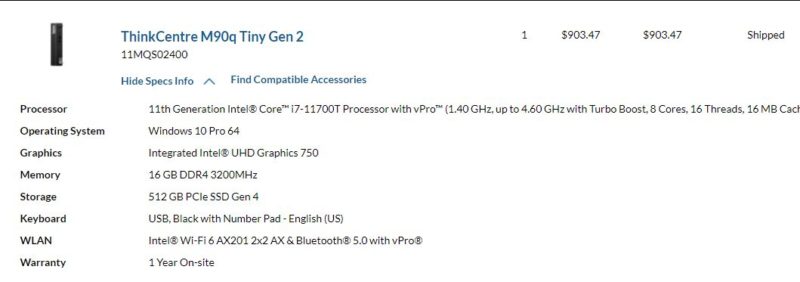
This was about $140 more than the Gen1 version we reviewed previously, and we lost two cores in the process. What we gained was higher per-core performance, the updated Intel iGPU, four times the memory, and four times the SSD space. We have many readers that would say that for $140 that is not worth it, but many will also see that as a great value.
We are just going to quickly note here that we previously reviewed other Lenovo “M90” products, specifically the M90n Nano IoT and standard M90n Nano models as part of this series. Those “Nano” models offer more compact packaging but with major trade-offs in performance.
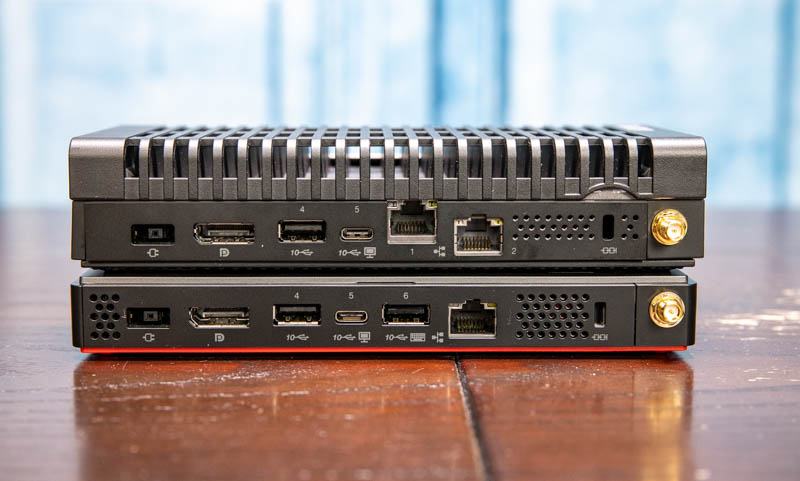
In this generation, we already reviewed the Lenovo ThinkCentre M75q Gen2 Tiny, the M80q Tiny as well as the HP Elite Desk 800 G6 (35W and 65W), and the Dell OptiPlex 7080 Micro. We even looked at the Lenovo IdeaCentre Mini 5i. These are all similar platforms that are current-generation platforms in 2021. Still, we wanted to take a look at the M90q Tiny Gen2 because it is an update to the popular line.
We are going to go into a quick hardware overview, then into the key specs. We are then going to talk a bit about performance and power consumption before getting to our lessons learned from these units and our final words.
Lenovo ThinkCentre M90q Tiny Gen2 Hardware Overview
The Lenovo ThinkCentre M90q Tiny is around 1L in size and uses the updated front design that we first saw with the Lenovo ThinkCentre M75q Gen2 Tiny and ThinkCentre M90q Tiny.
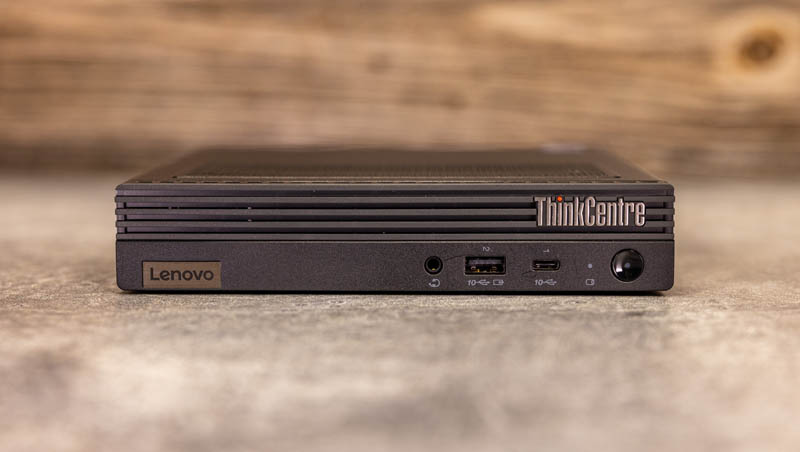
Aside from the power button, we get a headset port on the front of the system. We also get a USB 3.2 Gen2 Type-A port and a USB 3.2 Gen2 Type-C port on the front. In the Gen1 part that Type-C port was a Gen1 5Gbps port, not a 10Gbps Gen2 port.
On the rear of the unit, we get a fairly standard port configuration. There are both DisplayPort and HDMI output options standard. We get two USB 3.2 Gen2 and two Gen1 Type-A ports for four total. Lenovo has an optional slot that one can configure as blank, or get various serial or display outputs. We got an optional DisplayPort here since that was part of the pre-configured unit we purchased from Lenovo. In the Gen1 we had configured a Type-C port here and we still think that is a better option.
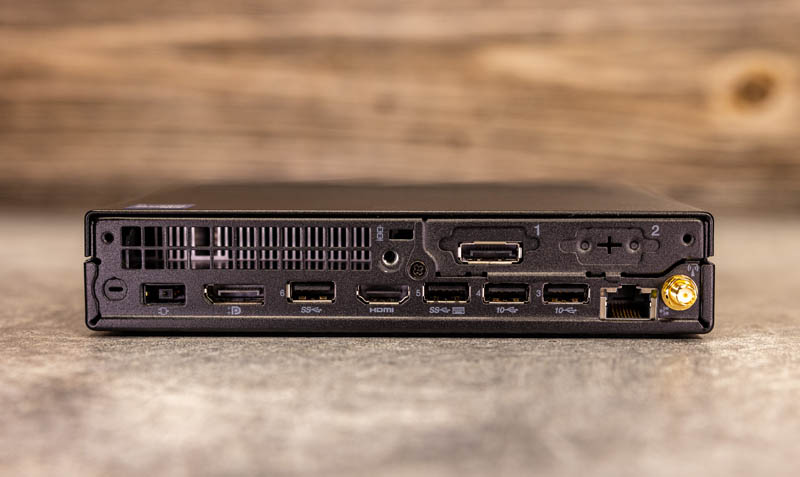
Networking is provided by a RJ45 connector. This is an Intel i219-LM NIC which is important. This configuration is valid for Intel vPro so we need to use this NIC. Frankly, given we are seeing on the Intel NUC 11 Pro Review Tiger Canyon NUC11TNKi5 and other systems 2.5GbE, this does feel a bit old even as the current generation since we are in the middle of an update to 2.5GbE in the desktop industry. Still, Lenovo offers a 4x 1GbE Intel i350 card for the optional slot that some of our readers may be interested in.
One item we wanted to note is just how many vents there are on this system. On both of the non-I/O sides (seen in the video) we have small vents. Atop the chassis, we have vents, even in this 35W unit.
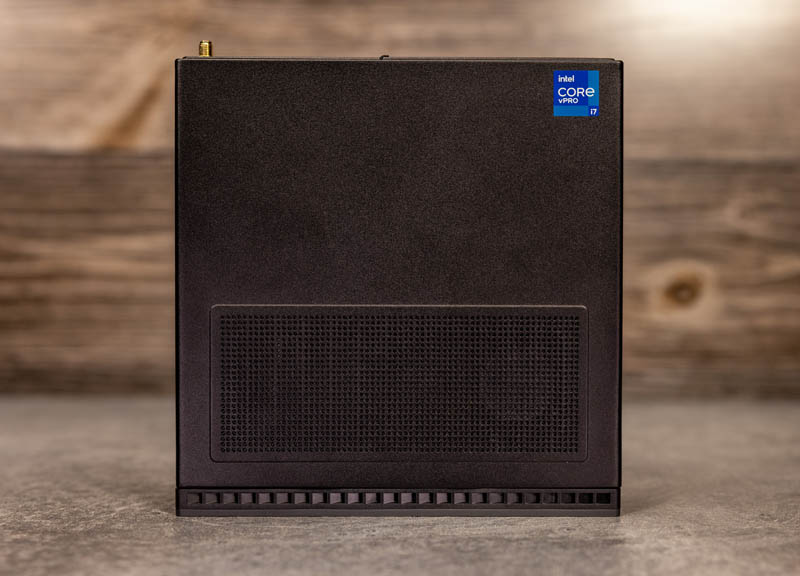
Suffice to say that the modern TinyMiniMicro node is using a lot more power at its maximum and generating more heat than we saw 4-5 generations ago even though they all advertise “35W TDP” parts. While the TDP remains the same, power has gone up and so have the airflow requirements.
This may not seem like a big deal, but for those TinyMiniMicro folks building clusters, this greatly increases the complexity of airflow from simple front to rear designs.
One fun part pictured above is that since this is an 11th gen Intel Core system, we now have the new Intel branding on the Intel Core i7 with vPro sticker.
Next, we are going to move the internal overview section for this system.

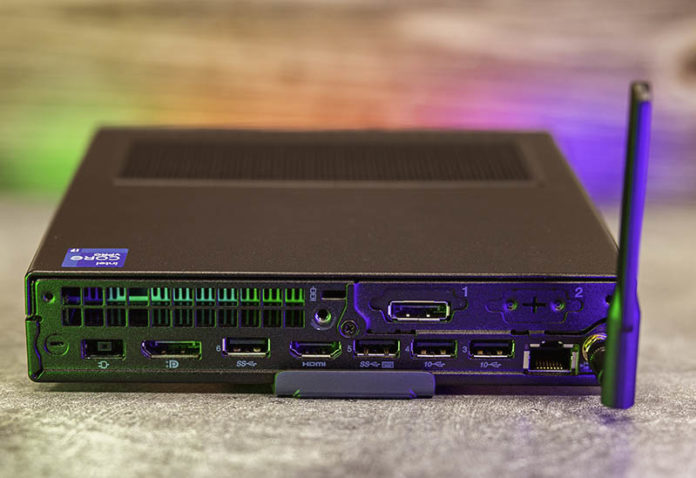



Can you test if it supports PCIe bifurcation so user could add pcie riser and there m.2 adapter with 2 or 4 extra NVMe m.2 slots.
Next question would be if combination would work thermally.
With over 35 mini-micro systems, do you have a rack mount solution? Could so many stacked into a rack with their associated power supplies be a fire hazard?
Are any of these tiny systems you’ve looked at something you’d like for a Pfsense box with 10GBE inter-VLAN routing on the LAN side and 1 gigabit VPN/filtering on the WAN side?
Tyler – have a HP machine next that will be good for something like this.
The Gen 2 M90q only has PCIe 3.0 storage. PCIe4.0 came with the Gen3 M90q.